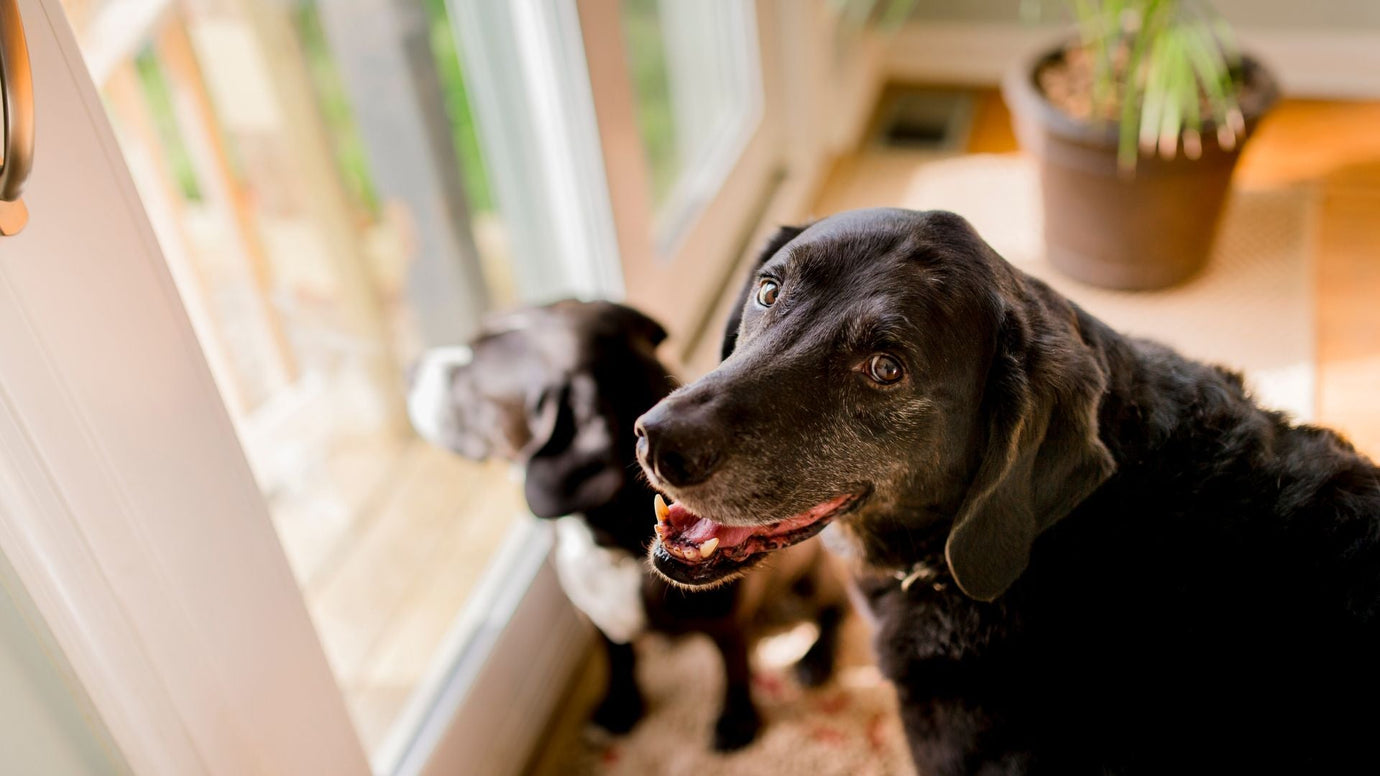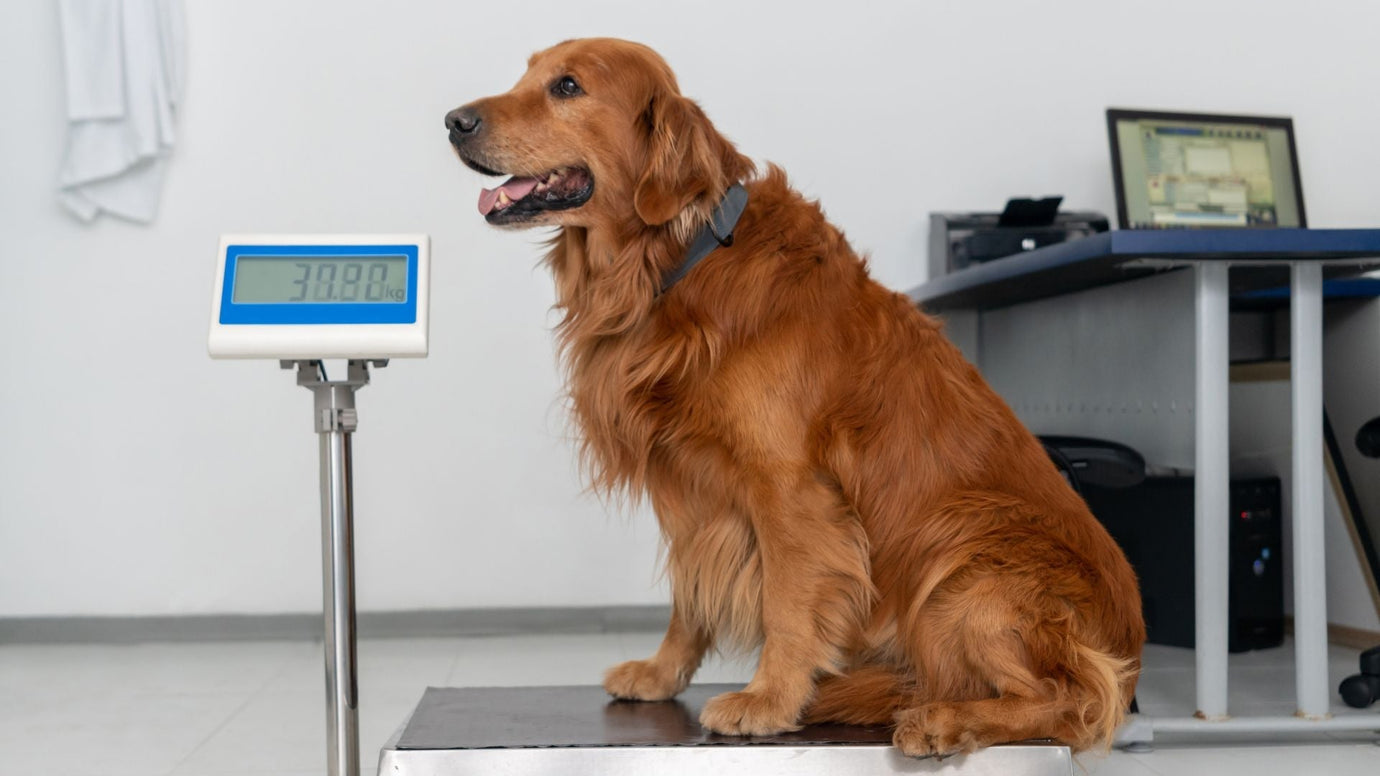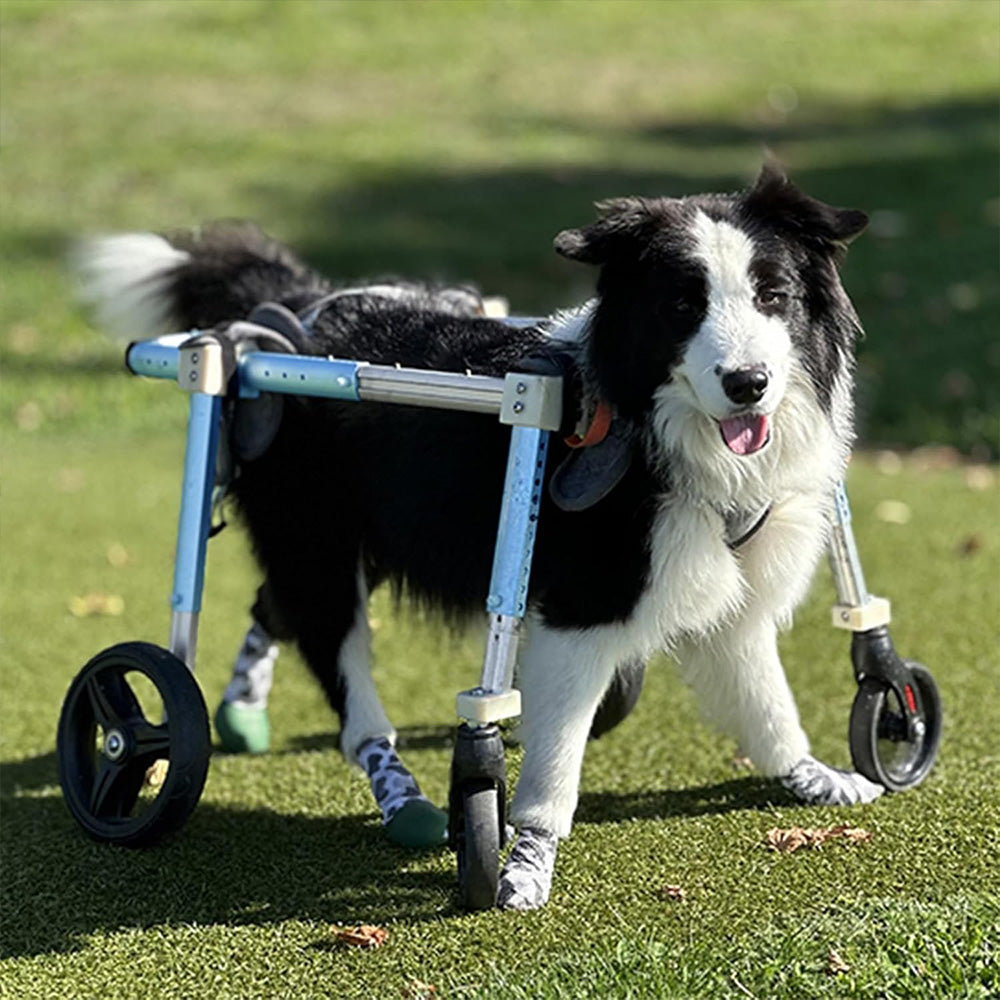How to Prevent Dog Dementia (Canine Cognitive Dysfunction): A Comprehensive Guide for Pet Parents
As our beloved canine companions gracefully age, they, much like humans, can experience a decline in cognitive function. This condition is formally known as Canine Cognitive Dysfunction (CCD), commonly referred to as dog dementia or dog Alzheimer's. It's a progressive neurodegenerative disorder that impacts a senior dog's memory, learning, perception, and awareness [1]. Understanding the nuances of CCD and implementing proactive strategies are paramount for pet parents aiming to ensure their senior dog maintains a high quality of life throughout their golden years.
Understanding Canine Cognitive Dysfunction (CCD)
CCD is characterized by a range of behavioral and cognitive changes that are not attributable to general medical conditions. It's often underdiagnosed due to a lack of objective diagnostic tools and the tendency for owners to attribute symptoms to normal aging [2]. However, recognizing the signs early is crucial for intervention. Common symptoms, often summarized by the acronym DISHA (Disorientation, Interactions altered, Sleep-wake cycle changes, House-soiling, Activity level changes), include:
- Disorientation: Getting lost in familiar environments, staring blankly at walls, or struggling to navigate around furniture.
- Altered Social Interactions: Reduced interest in greetings, decreased affection, or increased irritability towards family members or other pets.
- Sleep-Wake Cycle Disturbances: Restlessness, pacing, or vocalizing at night (often referred to as Sundowners Syndrome), and increased daytime sleeping.
- House-Soiling: Accidents indoors despite being previously house-trained.
- Activity Level Changes: Decreased exploration, reduced play, or repetitive behaviors.
Many pet parents frequently ask, "Can dogs get dementia?" and "Do dogs get sundowners?" The answer to both is a resounding yes, and these conditions significantly impact a dog's well-being and require attentive care.
Proactive Strategies for Preventing and Managing CCD
While a complete cure for CCD remains elusive, a multi-modal approach focusing on prevention and management can significantly slow its progression and enhance your dog's cognitive vitality [3].
1. Nutritional Intervention: Fueling the Brain
Diet plays a pivotal role in brain health. A high-quality diet specifically formulated for senior dogs, rich in certain nutrients, can make a substantial difference. Key dietary components include:
- Antioxidants: Vitamins E and C, selenium, and carotenoids help combat oxidative stress, which contributes to neuronal damage in aging brains [4].
- Medium-Chain Triglycerides (MCTs): Found in coconut oil, MCTs provide an alternative energy source (ketones) for the brain, which can be beneficial when glucose metabolism is impaired in aging dogs [5].
- Omega-3 Fatty Acids: Docosahexaenoic acid (DHA), in particular, is crucial for brain structure and function. Supplements containing high levels of DHA can support cognitive health [6].
- Cognitive Support Supplements: Ingredients like S-adenosylmethionine (SAMe), phosphatidylserine, and Ginkgo biloba extract have shown promise in improving cognitive function in some dogs. Always consult your veterinarian before introducing any supplements.
2. Physical Activity: A Body in Motion, a Mind in Motion
Regular, appropriate physical exercise is not only vital for maintaining muscle mass and joint health but also for cognitive function. Studies suggest that exercise may play a significant preventive role in CCD [7].
- Moderate Exercise: Short, frequent walks (2-3 times a day) are often more beneficial than one long, strenuous outing for senior dogs. This maintains cardiovascular health and blood flow to the brain without over-exertion.
- Low-Impact Activities: Swimming or hydrotherapy can be excellent options for dogs with arthritis or mobility issues, allowing them to exercise without putting excessive strain on their joints.
3. Mental Stimulation: Keeping the Mind Engaged
Just like physical muscles, the brain needs exercise to stay sharp. Mental stimulation for aging canines: keeping their minds sharp is a critical aspect of CCD prevention [8].
- Puzzle Toys and Food Dispensers: These encourage problem-solving and can make mealtime an engaging activity.
- Interactive Games: Short sessions of hide-and-seek, gentle fetch, or scent work can provide mental enrichment.
- Continued Learning: Even an old dog can learn new tricks! Short, positive reinforcement-based training sessions can keep neural pathways active.
- Environmental Enrichment: Regularly changing walk routes, introducing new (safe) scents, and providing opportunities for exploration can stimulate their senses and cognitive processes.
4. Regular Veterinary Care: Early Detection and Management
Why regular veterinary wellness exams are crucial for senior dogs cannot be overstressed. Biannual check-ups allow your veterinarian to:
- Monitor Overall Health: Rule out other medical conditions (e.g., thyroid disease, kidney disease, dental pain, arthritis) that can mimic or exacerbate CCD symptoms.
- Early Diagnosis: Identify subtle signs of cognitive decline early, allowing for timely intervention.
- Personalized Treatment Plans: Discuss tailored strategies, including diet, supplements, and potentially prescription medications (e.g., selegiline), to manage CCD [9].
If you're asking "How to tell if your dog has dementia?" or "Does my dog have dementia quiz?", your veterinarian is the most reliable resource for diagnosis and guidance.
5. Maintaining a Stable and Enriched Environment
Senior dogs, especially those with CCD, thrive on routine and predictability. A stable environment reduces anxiety and confusion.
- Consistent Schedule: Maintain regular feeding, walking, and bedtime routines. This provides a sense of security.
- Safe Home Environment: Remove obstacles, use non-slip mats on slippery floors, and provide nightlights to help disoriented dogs navigate, especially during episodes of Sundowners Syndrome.
- Comfortable Resting Areas: Ensure easily accessible, soft, orthopedic beds in quiet, draft-free locations.
Conclusion
Preventing and managing dog dementia is a profound act of love and commitment. By integrating a balanced diet, consistent physical and mental stimulation, regular veterinary care, and a supportive home environment, pet parents can significantly enhance their senior dog's cognitive health and overall quality of life. While the journey with an aging dog can present challenges, proactive care allows us to cherish their golden years, ensuring they remain comfortable, engaged, and loved. If you suspect your dog is showing signs of CCD, prompt consultation with your veterinarian is essential for diagnosis and personalized management strategies.
Frequently Asked Questions (FAQs)
Q1: What are the earliest signs of dog dementia?
A1: Early signs can be subtle and include mild disorientation (e.g., getting stuck behind furniture), reduced interaction with family, changes in sleep patterns (more sleeping during the day, restlessness at night), and occasional house-soiling. These often progress gradually.
Q2: Can dog dementia be cured?
A2: Currently, there is no cure for Canine Cognitive Dysfunction. However, early diagnosis and a multi-modal management plan involving diet, supplements, environmental enrichment, and sometimes medication can help slow its progression and improve the dog's quality of life.
Q3: What specific foods or supplements are best for a dog with CCD?
A3: Diets rich in antioxidants, Omega-3 fatty acids (DHA), and medium-chain triglycerides (MCTs) are beneficial. Supplements like SAMe, phosphatidylserine, and Ginkgo biloba are often recommended. Always consult your veterinarian for specific dietary and supplement recommendations tailored to your dog's needs.
Q4: How can I help my dog with Sundowners Syndrome sleep at night?
A4: Strategies include maintaining a consistent evening routine, providing a quiet and dark sleeping area, using nightlights to prevent disorientation, ensuring they have had adequate exercise during the day, and consulting your vet about pheromone diffusers or calming medications.
Q5: How long do dogs live after being diagnosed with dementia?
A5: The progression of CCD varies greatly among individual dogs. With proper management and supportive care, many dogs can continue to live comfortably for several months to a few years after diagnosis. The focus shifts to maintaining their comfort and quality of life.
Q6: Is there a genetic predisposition to dog dementia?
A6: While age is the primary risk factor, some research suggests certain breeds might have a higher predisposition to CCD. However, more studies are needed to fully understand the genetic components. Any senior dog, regardless of breed, can develop CCD.
Q7: Can I teach an old dog with dementia new tricks?
A7: While learning new complex tricks might be challenging, engaging in simple, familiar commands or new, easy-to-learn tasks can still provide valuable mental stimulation. Short, positive training sessions can help maintain cognitive function and strengthen your bond.
Q8: What is the role of exercise in preventing CCD?
A8: Regular physical activity improves blood circulation, including to the brain, and helps maintain overall physical health, which indirectly supports cognitive function. It also helps manage weight and reduces the risk of other age-related health issues that can exacerbate CCD symptoms.
Q9: How often should a senior dog visit the vet for cognitive health?
A9: It is generally recommended that senior dogs have veterinary check-ups every six months. These frequent visits allow for early detection of any health changes, including cognitive decline, and enable your vet to adjust care plans as needed.
Q10: What resources are available for pet parents dealing with dog dementia?
A10: Your veterinarian is your primary resource. Additionally, many veterinary behaviorists specialize in CCD. Online forums, support groups, and websites dedicated to senior pet care can also provide valuable information and emotional support. Books on senior dog care and CCD are also available.








